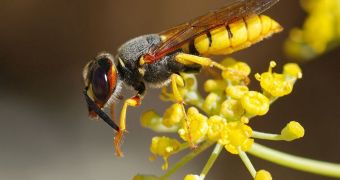University of Wisconsin-Madison investigators have recently proposed a very interesting concept related to the development of paper wasps, which may help scientists understand why is it that some of the insects develop into future queens, whereas others will go on to become workers.
The mechanism that underlies the development of both these classes, and all those in between, has fascinated UWM professor emeritus of entomology Robert Jeanne for many years.
He now believes that the answer to this complex question lies within a phenomenon called antennal drumming, which is when paper wasp queens and other high-ranking females participate in a peculiar ritual.
The manifestation sees them beating a rhythmic pattern against the walls of the nest chambers, using nothing but their antenna. Jeanne believes that these patterns are responsible for the development of either workers or future rulers.
Antennal drumming is not a new concept. People have been hearing it for decades, given that it is loud enough to be perceived by the unaided ear. In the past, studies have proposed that the rhythms were in fact a communication signal.
“It’s a very conspicuous behavior. More than once I’ve discovered nests by hearing this behavior first,” Jeanne explains. He and his team were able to show recently that antennal drumming patterns dictate th caste of offspring in a species of wasps called Polistes fuscatus.
Working together with postdoctoral researcher Sainath Suryanarayanan and USDA Forest Products Laboratory engineer John Hermanson, the expert published the new conclusions in a paper that will appear in the February 8 issue of the esteemed scientific journal Current Biology.
“The puzzle has been how the same egg, the same genome can give rise to two such divergent phenotypes,” says Suryanarayanan, the leader of the research effort.
“We think [antennal drumming] initiates a biochemical signaling cascade of events. Larvae who receive this drumming may express a set of genes that is different from larvae who don’t, genes for proteins that relate to caste,” the expert adds.
“This is the first case we know of a mechanical vibratory signal that an animal has evolved to modulate the development of members of its own species,” Jeanne adds, quoted by Science Blog.
Funding for the new investigation came from the UWM Department of Zoology and College of Agricultural and Life Sciences, as well as from the US National Science Foundation (NSF) Doctoral Dissertation Improvement Grant.

 14 DAY TRIAL //
14 DAY TRIAL //